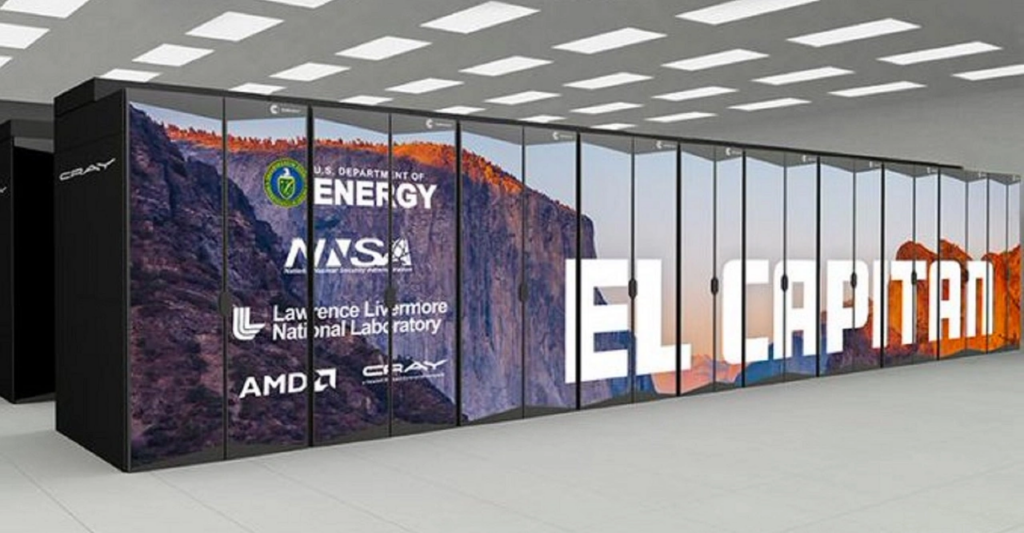El Capitan is officially the world’s most powerful supercomputer, achieving a staggering 1.742 exaflops—equivalent to 1.742 quintillion calculations per second. This performance not only surpasses its initial projection of 1.5 exaflops but also secures its position at the top of the 64th edition of the TOP500 list, which ranks the world’s non-distributed supercomputers.
Housed at Lawrence Livermore National Laboratory, El Capitan represents a significant leap in computational capabilities. It joins the exclusive ranks of exascale computers, a category defined by systems capable of performing over a quintillion calculations per second. The other two exascale systems, Frontier and Aurora, now occupy the second and third positions on the TOP500 list, respectively. Notably, Cray Computing, acquired by HP in 2019, played a pivotal role in developing all three systems.
El Capitan’s architecture boasts over 11 million combined CPU and GPU cores, utilizing AMD’s 4th-generation EPYC processors. Each of these 24-core processors operates at 1.8GHz and integrates AMD Instinct MI300A Accelerated Processing Units (APUs). This configuration not only delivers unparalleled performance but also demonstrates remarkable energy efficiency, achieving an estimated 58.89 gigaflops per watt.

Responsible for safety and reliability of the United States’ nuclear stockpile
The primary mission of El Capitan centers on ensuring the safety and reliability of the United States’ nuclear stockpile. Its advanced computational power enables detailed simulations and analyses, reducing the need for physical testing and enhancing national security measures. Beyond its nuclear responsibilities, El Capitan’s capabilities extend to various scientific research domains, including climate modeling, medical research, and artificial intelligence development.
The unveiling of El Capitan marks a significant milestone in supercomputing history. Its performance not only sets a new benchmark but also underscores the rapid advancements in computational technology. As global challenges become increasingly complex, the role of such powerful systems becomes ever more critical. El Capitan stands as a testament to human ingenuity and the relentless pursuit of technological excellence.
Looking ahead, the supercomputing community anticipates further innovations inspired by El Capitan’s achievements. Researchers and engineers worldwide will likely draw upon its design and performance metrics to develop the next generation of computational systems. For now, El Capitan holds the crown, symbolizing a new era in computational prowess and its profound impact on science and technology.














